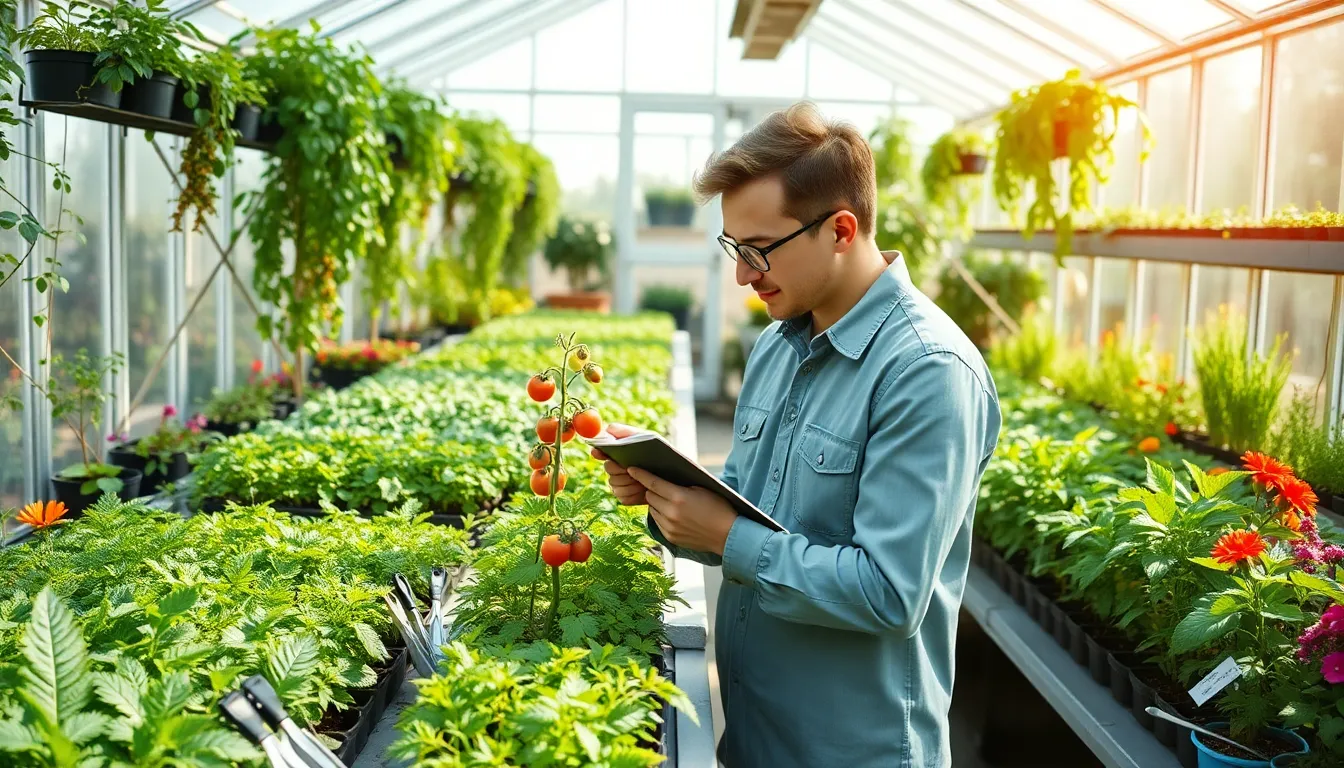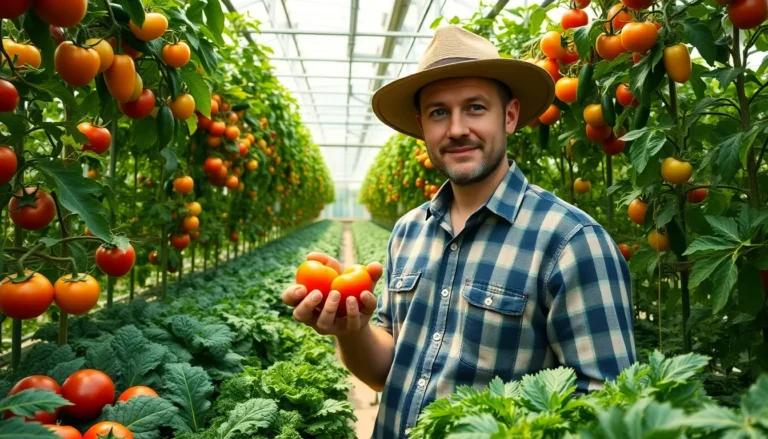Starting a greenhouse is like opening a treasure chest of gardening possibilities. For many aspiring gardeners, the thought of nurturing their own plants can seem daunting, but with the right approach, it can be a rewarding adventure. Imagine stepping into a vibrant world filled with fresh vegetables, fragrant herbs, and luscious fruits, all within arm’s reach. If you’re ready to dig in, let’s explore what to grow in a greenhouse for beginners, all while keeping it light and fun.
What To Grow In A Greenhouse For Beginners

A greenhouse is not just a fancy addition to a backyard: it’s a gateway to year-round gardening. First off, one of the greatest rewards is the extended growing season. No longer is gardening restricted to just the warmer months. With a greenhouse, seedlings can be started early, and plants can continue flourishing well into the cool months.
Another perk is the control over environmental conditions. Painfully high temperatures and surprise frost can wreak havoc on a garden. But, within the protective walls of a greenhouse, temperatures can be regulated, humidity can be monitored, and pests can be kept at bay. Also, it’s an ideal space for experimentation, allowing beginners to test their green thumbs without the pressure of outdoor elements.
Finally, a greenhouse can be a personal sanctuary. It offers a serene environment to unwind, reflect, and connect with nature while surrounded by the scents and sights of growing life.
Choosing The Right Plants
Selecting the perfect plants for a greenhouse is essential for a fruitful growing experience. Want to start with what’s easy and rewarding? Look no further than a mix of vegetables, herbs, and fruits.
Best Vegetables For Beginner Greenhouse Growers
When it comes to choosing vegetables, certain varieties shine for beginners. Consider starting with lettuce, radishes, or tomatoes. Lettuce can sprout quickly, giving instant gratification, while radishes are ready for harvest in just a few weeks. Tomatoes, especially dwarf varieties, thrive in greenhouses and reward growers with juicy fruits. These options are not only forgiving, they’ll also make your greenhouse a colorful explosion of greenery.
Popular Herbs To Grow In A Greenhouse
Herbs are another fantastic choice for novices. Basil, parsley, and mint are not only easy to grow, they elevate any dish. These fragrant plants love the warm and humid conditions of a greenhouse, making them a perfect fit. With a small herb garden, beginners can easily spice up their culinary adventures while having fresh ingredients at their fingertips.
Fruit Options For Greenhouses
Fruit lovers have no shortage of options either. Strawberries, dwarf citrus trees, and melons can flourish under greenhouse conditions. Strawberries offer the joy of picking freshly ripe fruit, while citrus trees bring a splash of sunshine into any space. They’re delightful and require more patience, which just adds to the satisfaction when your hard work pays off.
Climate Considerations For Your Greenhouse
Understanding the climate within a greenhouse is crucial. The temperature can fluctuate based on factors like the time of day and the season. Installing thermostats and fans can help manage these shifts. Also, deciding on heating methods will be vital for colder months. Options range from space heaters to solar systems, providing flexibility depending on the budget.
Ventilation also plays a key role: it’s crucial to allow stale air to escape and fresh air to enter. At peak sunlight, opening windows or using automated ventilation systems ensures proper airflow, preventing plant stress and promoting healthy growth.
Tips For Successful Greenhouse Growing
Embracing greenhouse gardening can feel like stepping into a new world. With a few strategic tactics, success is within reach. First, carry out proper watering routines. Since greenhouses can retain moisture better than outdoor gardens, overwatering can be detrimental. Using drip irrigation is an efficient way to hydrate plants without excess runoff.
Next, consider companion planting. Certain plants can boost each other’s growth while minimizing pests. For instance, planting marigolds alongside tomatoes can repel harmful insects. This method not only enhances plant health but also elevates your gardening game to a new level.
Finally, keep records of plant performance. Noting what works and what doesn’t can provide invaluable insights for future growing seasons.
Common Mistakes To Avoid
Every gardener makes mistakes, and that’s part of the journey. One common pitfall is neglecting to monitor humidity levels. A greenhouse can become a humid jungle if not properly checked, leading to mold and disease. Keeping humidity in check is essential for a healthy garden.
Another misstep is overplanting. While it may be tempting to fill every inch with plants, overcrowding leads to competition for resources. Each plant needs its own space to thrive, protecting them from stress and enhancing their growth potential.





